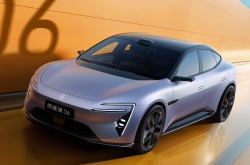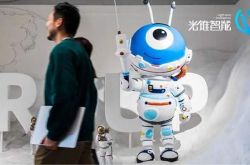Dreame Technology's Swift Expansion Fuels a New Surge of Robotics Startups
![]() 11/28 2025
11/28 2025
![]() 437
437
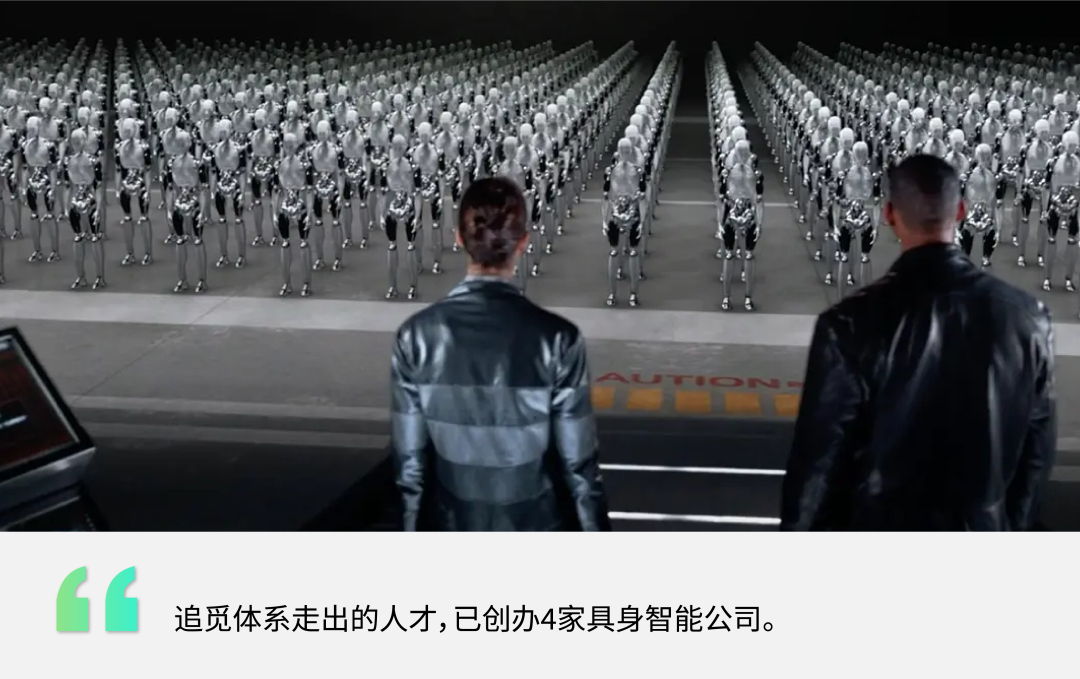
Author | Xiang Xin
In the tech realm, a defining signal frequently emerges when a new technology shifts from its early exploratory phase to mid-stage scaling (scaled development): companies, teams, and talent begin to split and diversify.
Once an enterprise amasses a certain level of expertise in technology, supply chain management, and engineering systems, it starts to disseminate talent. These individuals often become catalysts for industrial expansion, reshaping an industry's growth trajectory and propelling it from a single-dominant-player era to a multi-polar competitive landscape.
In the autonomous driving sector, Baidu acted as the technological hub. Its AI driving experts dispersed widely, founding a host of renowned companies like WeRide, Pony.ai, and Horizon Robotics.
Today, the robotics industry is experiencing a similar moment of fission, with some companies beginning to play roles akin to Baidu's early days. Dreame Technology exemplifies this trend.
Over the past three years, a group of executives and engineers from the Dreame ecosystem have established four high-valuation robotics companies: AquaWise, Magic Atom, Luming Robotics, and Lexiang Technology. 
Since their inception, these firms have not only secured rapid financing but also swiftly developed product matrices and entered the market. Among them, AquaWise has captured a 90% market share in the high-end pool cleaning robot sector.
Consequently, Dreame has been dubbed the "Whampoa Military Academy of the Robotics World" by outsiders.
Meanwhile, Dreame itself is advancing at an astonishing pace.
This smart cleaning appliance company, which began with robotic vacuum cleaners and floor washers, has announced its entry into major appliances, drones, and even the automotive, smartphone, and astronomical sectors this year, launching numerous innovative products.
On one hand, talent from Dreame is making significant strides in embodied intelligence; on the other, Dreame is relentlessly expanding into new product categories. Behind these moves lies a common core driver: the diffusion of Dreame's "innovation gene."
This gene stems from engineering systems, supply chain capabilities, and smart manufacturing experience being thoroughly honed within a single enterprise, giving rise to entrepreneurial teams and business systems adept at technological reuse, targeting high-end markets, and pursuing efficient commercialization.
What technological and organizational models are being replicated by Dreame-backed companies? Could this force become an accelerator for the next wave of expansion in China's robotics industry?
We aim to find some answers by examining the trajectories of these new companies and Dreame's own actions. 
When Dreame Talent Flocks to the Embodied Intelligence Arena
Dreame-backed robotics startups share three common traits: "high-caliber entry, industrial mindset, and global layout."
Talents from Dreame who venture into robotics have all achieved remarkable results at their former employer, leading to generally high starting points, smooth financing, and strong capital endorsement.
AquaWise raised 1 billion yuan in September this year, with investments from Meituan, Hillhouse Capital, and other renowned institutions. Founder Wang Shengle, a post-90s composite talent, previously served as Dreame's Executive Vice President, accumulating deep expertise in R&D, supply chain, and sales.
Lexiang Technology secured nearly 500 million yuan in financing over nine months, with continued investments from IDG Capital and Matrix Partners China. Founder Guo Renjie, a post-00s dubbed a "genius executive," led Dreame's China region to achieve revenue growth from zero to 6 billion yuan within three years.
Luming Robotics completed three rounds of financing within six months. Founder Yu Chao previously headed Dreame's embodied robotics division, leading teams in developing Xiaomi's CyberDog (where Dreame was responsible for motor R&D and overall production) and Dreame's quadruped robot, as well as pioneering the world's first backflip electrically driven embodied robot.
Magic Atom resembles Dreame's "direct descendant," with significant participation from Dreame's Chuanchuang Venture Capital in its two rounds of hundred-million-yuan financing within six months. The team also participated in developing Xiaomi's CyberDog and Dreame's quadruped robot Eame One, and introduced Dreame's first humanoid robot capable of latte art. 
It's evident that both Magic Atom and Luming Robotics originated from Dreame's embodied robotics division, with founding teams possessing strong technical backgrounds, thus classifying them as "technology-driven."
In contrast, the founders of AquaWise and Lexiang Technology bring more marketization and operational experience, positioning them as "market-driven."
These background differences lead to distinct product definitions.
Magic Atom and Luming Robotics primarily focus on developing full-sized general-purpose humanoid robots with a long-term vision, while AquaWise and Lexiang Technology target consumer-grade robots with a more pragmatic outlook.
Despite their differing styles, all teams from Dreame exhibit a strong industrial mindset.
Unlike a product-centric mindset focused solely on technological advancement, an industrial mindset considers the entire process from upstream components and midstream manufacturing to downstream consumer usage. This strategy of keeping the industry in-house is a continuation of Dreame's culture.
The industrial mindset of Dreame-backed entrepreneurial teams manifests in three key aspects.
First, they emphasize core technologies and the integration and control of supply chains. They strive to master all aspects, from underlying algorithms to core components and even production.
For instance, both AquaWise and Magic Atom have established their own production lines or factories. Magic Atom has increased its hardware self-research rate to over 90%, reducing manufacturing costs per unit by 30%. Luming Robotics has mastered full-stack technologies from the robot body to its "brain."
Second, they assess industrial cycles, starting from industry gaps to identify their market positions and form differentiated competition.
Dreame-backed companies do not pursue absolute technological frontiers but instead opt for blue ocean scenarios combining "niche needs + market gaps + feasible technology transfer."
AquaWise founder Wang Shengle observed that the pool cleaning robot sector lagged behind robotic vacuum cleaners by 5-8 years in technology, leading him to transplant successful strategies from the mature sector. Within half a year of product launch, sales reached several hundred million yuan. 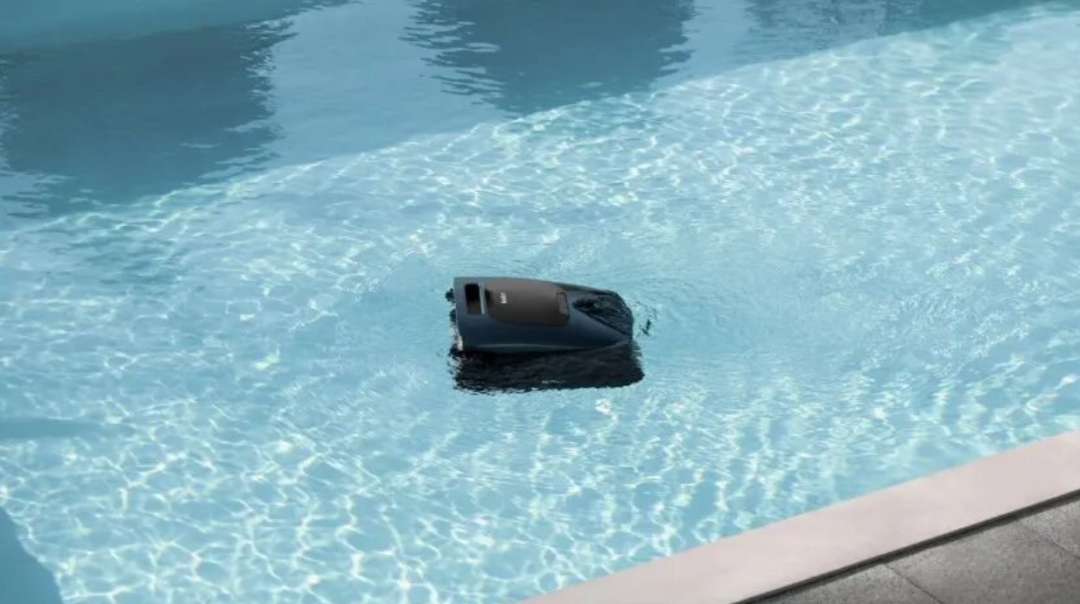
AquaWise Pool Cleaning Robot
Lexiang Technology founder Guo Renjie believes the consumer-grade AI hardware market remains untapped, with many cutting-edge technologies confined to large humanoid robots and not yet decentralized. Thus, he decided to develop small, general-purpose embodied intelligence robots for home use, focusing not on highly challenging household chores but on providing companionship, patrol, and emotional value. 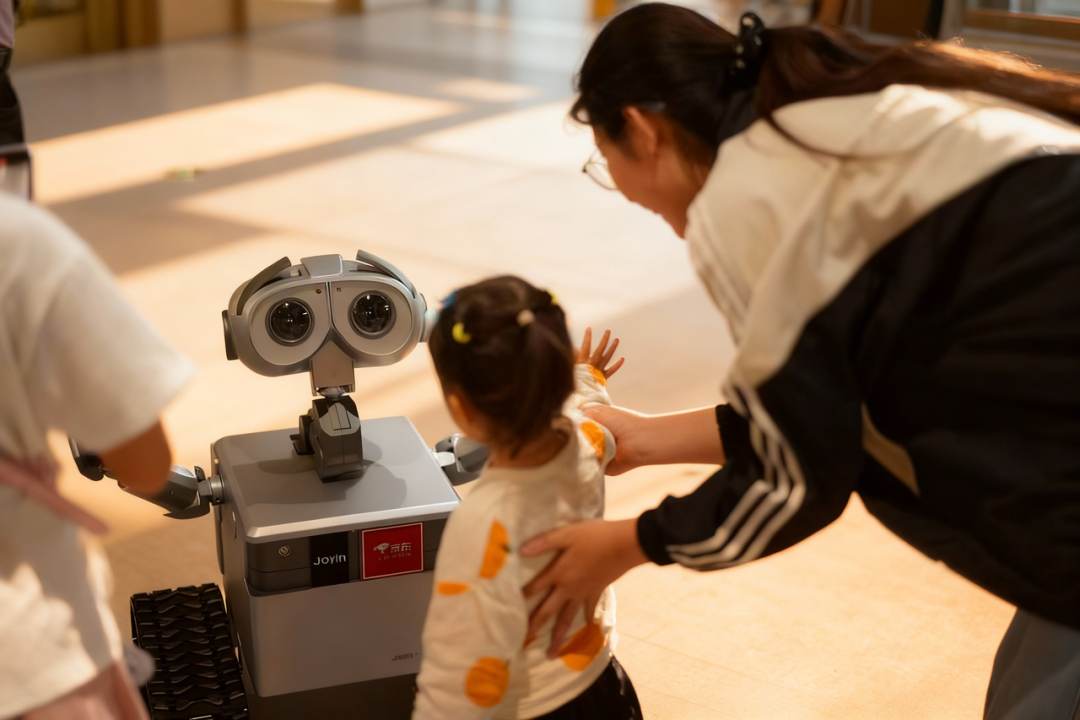
Lexiang Technology Home Smart Outdoor Robot W-Bot
Magic Atom did not follow the path of supplying humanoid robots to automotive factories but instead chose home appliance manufacturing plants as training grounds. Company President Wu Changzheng believes that home appliance manufacturing demands high flexible production, with numerous processes yet to be automated but feasible for automation, and more forgiving production rhythms compared to automotive factories, making it better suited for current humanoid robot capabilities.
Third, they excel at identifying user pain points and deriving technology from real-world scenarios to ensure their products are useful consumer goods, a trait also stemming from Dreame's efficiency-driven culture.
Lexiang Technology paused its R&D progress initially to deeply investigate elderly care and household life needs, ensuring product practicality. AquaWise addressed the pain points of traditional pool cleaning robots' limited functionality and inadequate cleaning by introducing products capable of autonomous return and three-dimensional cleaning.
Luming Robotics targeted the pain point of limited load capacity in dual-arm robots for industrial scenarios, launching robots with a 50kg dual-arm load capacity to meet high-load industrial demands, and forming strategic partnerships with Dematic and COSCO Shipping. 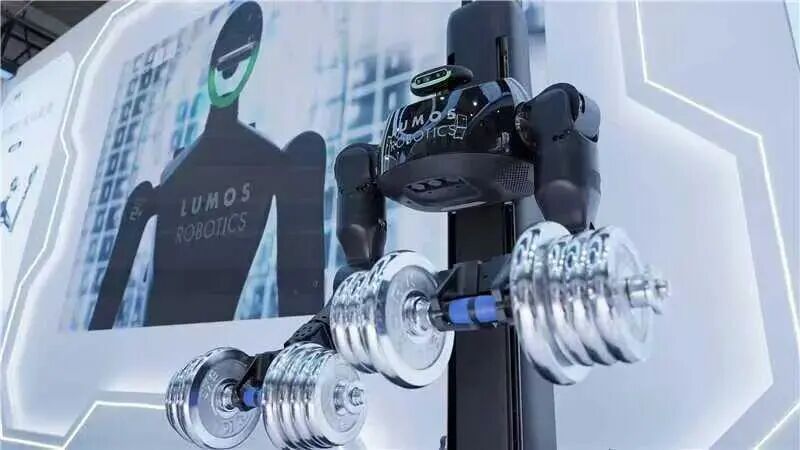
Additionally, these companies have uniformly adopted a global-first strategy, with R&D and manufacturing based in China (coincidentally, all in Suzhou, where Dreame is headquartered) and a global market focus, continuing Dreame's successful experience of "competing internationally before domestically." 
The Inner Logic Behind Dreame Becoming the Whampoa Military Academy of Robotics
Dreame's ability to spawn numerous robotics companies results from the combined effects of its technological reserves, high R&D investment, and flexible BU structure.
Dreame actually entered the embodied intelligence field earlier than most humanoid robot companies.
As early as 2021, Dreame not only deeply participated in developing Xiaomi's robot dog "CyberDog," leading the design and R&D of its high-performance servo motors and overall production, but also independently developed the quadruped robot dog Eame One the same year. Subsequently, it established an Innovation Robotics Research Institute internally and launched a humanoid robot project in 2022.
In 2023, Dreame introduced the second-generation Eame One, boasting 15 degrees of freedom, one of the highest in the industry at the time. It also launched a humanoid robot capable of latte art during the same period. 
Dreame's exploration into robotics was facilitated by the high reusability of its long-accumulated core technologies.
Dreame regards core technologies as the "heart" and "brain" of robots:
The "heart" is the high-speed digital motor, essentially a high-speed electric motor, with approximately 90% of its technical capabilities directly applicable to the servo motor R&D of humanoid and quadruped robots;
The "brain" is AI visual algorithms, where the underlying logic of perception, decision-making, and execution in robotic vacuum cleaners aligns with that of embodied robots.
This reusable technological foundation enabled Dreame to quickly start and rapidly shape its robotics endeavors, providing a natural advantage for Dreame-backed robotics startups.
Dreame founder Yu Hao emphasized in 2022: "The next decade will be the era of generalized robots."
Investments in the robotics sector have allowed Dreame to accumulate substantial core talent and practical experience in embodied intelligence.
Later, when Dreame's internal robotics projects stalled in market promotion, these well-cultivated core talents naturally inclined to branch out independently, seeking rapid commercialization breakthroughs in new environments.
Furthermore, Dreame's extreme emphasis on R&D innovation paved the way for these Dreame-backed founders.
Dreame's R&D investment consistently exceeds 7% of its total revenue, well above the industry average, reaching up to 20% at its peak, with one-third of the funds entirely dedicated to technological pre-research in new fields.
This aggressive innovation investment not only ensures Dreame's continuous exploration of technological boundaries but, more importantly, cultivates a group of engineers with broad vision, comprehensive technical skills, and a habit of continuous trial-and-error and problem-solving, supplying talent for the fission.
The final crucial factor is Dreame's BU (Business Unit) organizational structure.
Dreame adopted a BU structure starting in 2022, where each BU is responsible for R&D, production, and sales, and can immediately adjust product strategies based on market feedback, functioning like an independent small company.
This model has provided Dreame-backed robotics company founders with practical experience in rapidly establishing companies and making efficient commercial decisions.
In this high-pressure, rapidly iterating environment, a practical issue gradually surfaced—resources within large corporations are always limited.
AquaWise founder and former Dreame Executive Vice President Wang Shengle noted that Dreame, fundamentally still a large corporation, would not allocate its strongest resources and efforts to innovative businesses.
When astute entrepreneurs realize that a technology or market opportunity cannot receive top-priority resources within a vast system, independent entrepreneurship becomes an inevitable choice to take control of their destiny. 
Dreame: A Blend of Xiaomi, Apple, and Tesla
As Dreame-backed robotics companies are being established, Dreame itself is expanding at an astonishing pace.
Founded in 2017, Dreame initially entered Xiaomi's ecosystem with high-speed digital motor technology comparable to Dyson's. After launching its own brand, its product lines focused for a long time on robotic vacuum cleaners, floor washers, vacuum cleaners, and hair dryers, belonging to the smart cleaning equipment and personal care sectors.
However, starting in March of this year, Dreame has been making waves in the industry: not only has it announced its entry into the major appliance sector, encompassing air conditioners, refrigerators, and washing machines, with a slew of products already on the market, but it has also officially declared its foray into automotive manufacturing, established an Astronomy Business Unit (BU), and launched smartphones that have secured overseas orders worth hundreds of millions of yuan.
Currently, Dreame's product lineup spans six key domains. 
Dreame has also set up a robotics industry venture capital fund, Zhuichuang Venture Capital, with a total scale of 11 billion RMB, and has made significant investments in numerous enterprises this year.
The companies that have received investments from Zhuichuang Venture Capital can be categorized into two groups: one consists of companies within the Dreame ecosystem chain, which were incubated based on new product lines; the other comprises external companies, including Qianjue Technology, which specializes in embodied large models, and Magic Atom, a humanoid robotics firm.
Overall, Dreame's expansion strategy centers around "self-developed product lines + incubated enterprises + investments in external companies."
Cross-industry expansion is not a new phenomenon. What sets Dreame apart is the intensity and breadth of its cross-industry moves.
Why is Dreame expanding so aggressively?
Dreame's aggressive expansion is primarily driven by commercial necessity, stemming from two key factors: explosive revenue growth and limited future market growth potential for its core business.
Dreame has witnessed explosive revenue growth in recent years, with revenue reaching approximately 15 billion RMB in 2024 and surpassing the full-year 2024 revenue in just the first half of 2025, providing ample financial resources for its expansion.
Meanwhile, the market growth potential for its core business of intelligent cleaning equipment is becoming increasingly constrained. According to a Euromonitor research report, global retail sales of cleaning appliances reached $28.2 billion in 2024 and are projected to reach $38.3 billion by 2029, representing a mere 5% compound annual growth rate.
For a company accustomed to rapid growth, identifying new avenues for secondary growth is crucial. Expanding the industrial chain into robotics, motors, actuators, and high-end home appliances represents the most logical direction for expansion. 
The deeper motive behind Dreame's expansion lies in the personal background of its founder, Yu Hao.
Yu Hao's journey has been one of replicating success at progressively higher levels, starting from a rural primary school in Jiangsu, progressing to a town middle school, then to a county high school, and ultimately to Tsinghua University. Each time, his starting point was modest, but he consistently managed to excel and achieve top rankings within six months.
This ability to rapidly widen the gap once he finds the right approach has permeated nearly all his academic and entrepreneurial endeavors. As a result, the motto "Either don't do it, or do it first and do it best" has become a cornerstone of Dreame's culture.
Yu Hao has always emphasized the vision of a "generalized robotics company."
In his strategic roadmap, Dreame's core technologies are the "brain" (intelligent algorithms) and the "heart" (high-speed digital motors), which should not be limited to the home appliance category but should extend to a broader robotics system applicable to fields such as agriculture, transportation, and healthcare.
This vision is another driving force behind Dreame's expansion—the compound interest effect.
During its tenure as a contract manufacturer for Xiaomi, Dreame developed two core strategies.
The first is to delve deep into core technologies, mastering foundational technologies such as motors and visual algorithms.
The second is to deeply understand the supply chain and integrate externally, enabling core technologies to be combined with external suppliers and channel partners to launch new products.
These two capabilities have allowed Dreame to leverage its foundational technologies, supply chain, and organizational strengths, enabling it to independently expand its product lines to floor-washing machines and hair dryers through engineering-driven, rapid trial-and-error methods after separating from Xiaomi, achieving remarkable success.
Having tasted success in its initial expansion, Dreame has set its sights even higher, embarking on its second expansion phase this year.
Moreover, Dreame has already earned the trust of high-end consumer groups overseas, with 6,000 offline channels in over 100 countries worldwide and serving over 30 million households. This high-value user base provides Dreame with the confidence to venture into new fields, with most of its new businesses targeting the high-end market.
While Dreame's aggressive expansion may appear to be extremely broad and seemingly disorganized on the surface, it actually adheres to a consistent underlying logic, capitalizing on two era-defining advantages of China: the completeness and rapid responsiveness of China's supply chain system, and the engineer dividend.
Dreame optimizes costs by leveraging a mature supply chain, captures user mindshare through technological innovation, and earns high profit margins in the high-end market, forming a virtuous cycle of "technology-supply chain-product."
Yu Hao stated three years ago, "Dreame is in a race for a hundred-billion-dollar market. After this battle is won, I will set my sights on a trillion-dollar competitor."
Today, Dreame's expansion and ecosystem operations resemble those of Xiaomi, its mastery of core technologies echoes that of Apple, and its industrial layout is reminiscent of Elon Musk's vision behind Tesla. Xiaomi, Apple, and Tesla are all companies with market capitalizations exceeding one trillion dollars and continuously expanding product ecosystems.
Dreame's expansion is a composite strategy that integrates the essence of these three tech giants.
In terms of expansion and ecosystem building, it draws inspiration from Xiaomi's operational logic, rapidly extending boundaries through self-development, incubation, and investment.
However, there are also distinctions in their ecological expansion paths. Xiaomi's expansion relies more on cooperation and investment, following a cost-effectiveness route, while Dreame's current expansion leans more towards self-development and technology reuse, pursuing a high-end substitution route.
In terms of core technology mastery, it adheres to independent R&D and a high-end strategy, using high profits to fuel R&D, which aligns closely with Apple's approach.
In terms of industrial layout, Dreame spans multiple sectors such as "human-home-vehicle-aerospace," constructing an "air-space-ground integrated" ecosystem, striving to demonstrate Musk-like ambition through the linkage of foundational technologies.
Yu Hao remarked, "In the past, it might have been R&D in the US and manufacturing in China, but now, the way the world operates is undergoing new changes. The future global landscape will undoubtedly be: global resources, Chinese R&D, local manufacturing, and worldwide consumption."
The emergence of robotics companies with a Dreame background is a natural outcome of Dreame's organizational mechanisms: a company driven by compound interest effects, technology-led, and with a high density of engineers inherently possesses strong fissile properties. This is because it provides engineers with three key conditions:
A sufficiently rich technology stack: motors, algorithms, motion control, and manufacturing systems;
Sufficiently complex business boundaries: from intelligent cleaning equipment to robotics;
A sufficiently aggressive strategic expansion rhythm.
In such an environment, engineers grow rapidly and develop broad visions, naturally choosing to venture out on their own at some point.
This phenomenon is very similar to the "fission of Xiaomi's ecosystem chain," "Huawei-affiliated entrepreneurs," and "DJI-affiliated entrepreneurs."
Therefore, today we witness Dreame continuously expanding into new product categories, while robotics companies with a Dreame background are also accelerating their growth externally.
Some have begun to pause and consolidate, while others choose to defend their own turf; but Dreame and its talents are accelerating their pace on this path of innovation and expansion.

